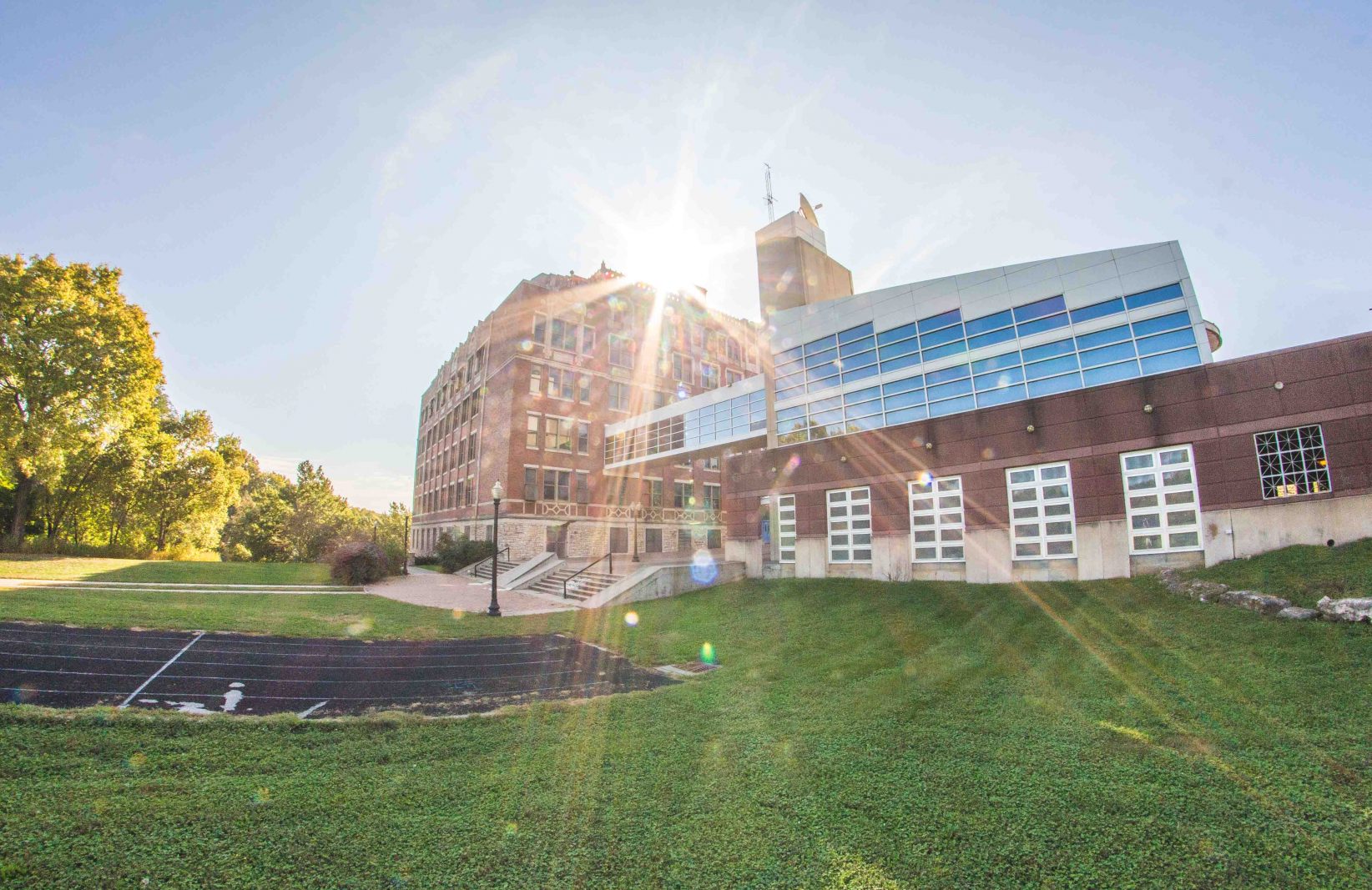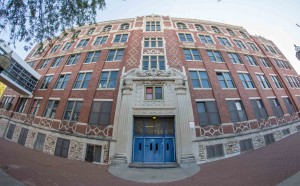A school tells the story of a community.
Hallways lined with neighborhood students. Lockers packed with books. Gymnasiums breeding athletic competition.
Now imagine a vacant school — a place with rich community history that then goes unattended. The lights are turned off and the classrooms go silent.
This is what happened with Westport Junior High and Westport High School. The two architectural beauties sit on the north and south side of Kansas City’s 39th Street, just three blocks east of Main Street and have been vacant since 2010.
“Like acupuncture, it’s knowing where to put that needle. It’s a very strategic, thoughtful decision to invest this time, energy and resources in this place because of its location and because of all its rich characteristics.” – Bob Berkebile
But soon the lights will be turned back on. Bob Berkebile and four of his partners at Sustainable Development Partners are working to re-purpose the spaces to become a center of innovation and catalyst of revitalization.
Berkebile poetically refers to the project as an effort in urban acupuncture.
“Like acupuncture, it’s knowing where to put that needle,” he said. “It’s a very strategic, thoughtful decision to invest this time, energy and resources in this place because of its location and because of all its rich characteristics.”
Berkebile’s firm hosted an open house Tuesday showcasing Westport Junior High, which along with Westport High School will become the “Westport Commons: Center for Creativity and Innovation.”
Sustainable Development Partners purchased the junior high in January of 2014 and plans to begin its redevelopment in November. Kansas City Public Schools approved in September the sale of the high school to Sustainable Development Partners, which now is preparing design and construction plans for it.
In total, redevelopment of the combined 300,000 square-foot spaces will cost about $23 million.Westport Junior High will be home to non-for-profits, while Westport High School will be a space for tech and innovation.
In its tour Tuesday, Sustainable Development Partners highlighted not only the junior high’s poor conditions but also its rich upside.
The building’s neglect is noticeable. Water damage riddles the gym’s maple wood floors. The school’s ornate auditorium ceiling has partially caved. Skateboarders have claimed its outdoor stairwells as an urban terrain park. Wooden boards shield its windows.
Despite the deterioration, the building’s potential is palpable.
The junior high’s 160,000 square-feet of space is flooded with natural light and boasts 55 classrooms, two gyms, an auditorium and a cafeteria that will eventually house community-based non-for-profit organizations. By sharing space and a common vision for Kansas City, organizations such as The Lean Lab, Cultivate KC, LaunchCode and others will be able to closely collaborate and develop strong relationships.
“This introduces Kansas City to a totally different way of working, of collaborating, of being,” Berkebile said.
Sustainable Development Partners are preserving the school’s wood floors, taking advantage of its original design and maximizing its proximity to parks and a public transit system. Berkebile said he hopes those assets will transform the two schools into a hub that will once again give back to the surrounding community.
Berkebile believes that Westport Commons, as a central location for innovation, has the potential to stimulate real change in Kansas City, which is what excites him about the project.
So as the lights switch back on in two dark buildings, Berkebile said Kansas Citians can expect a bright future that can inspire the community as a whole.







































